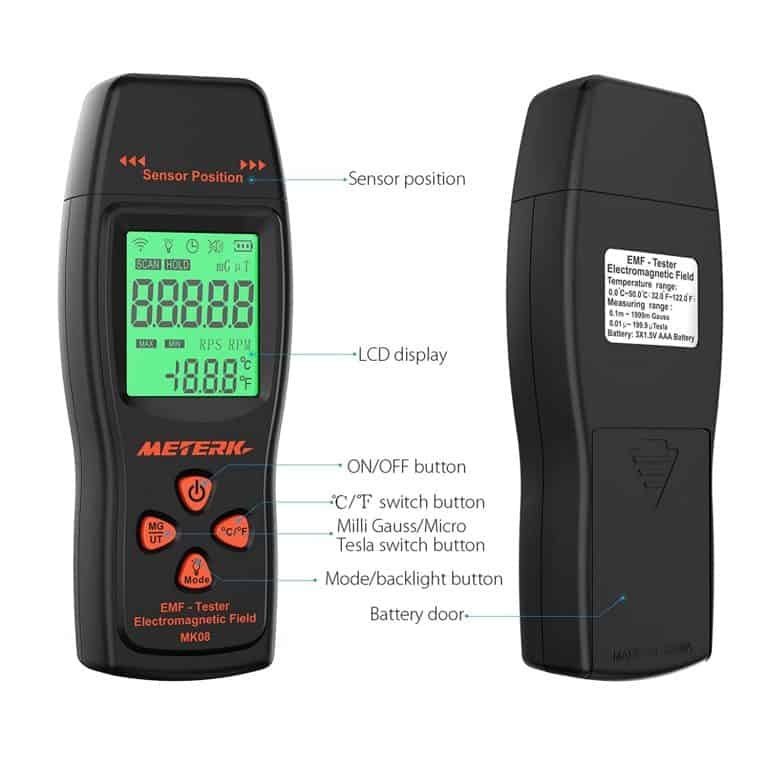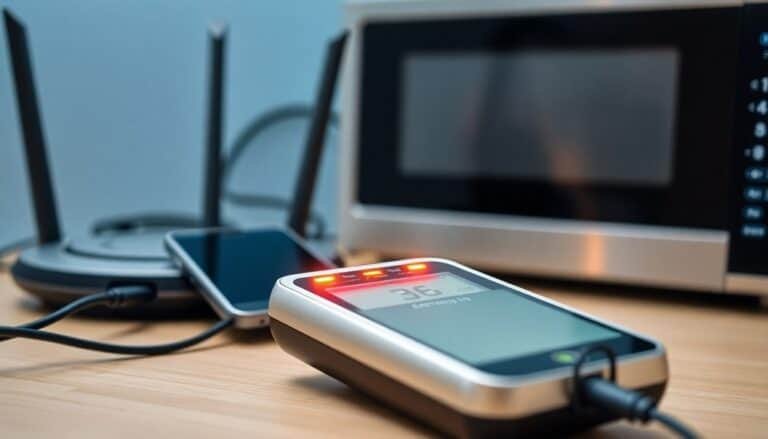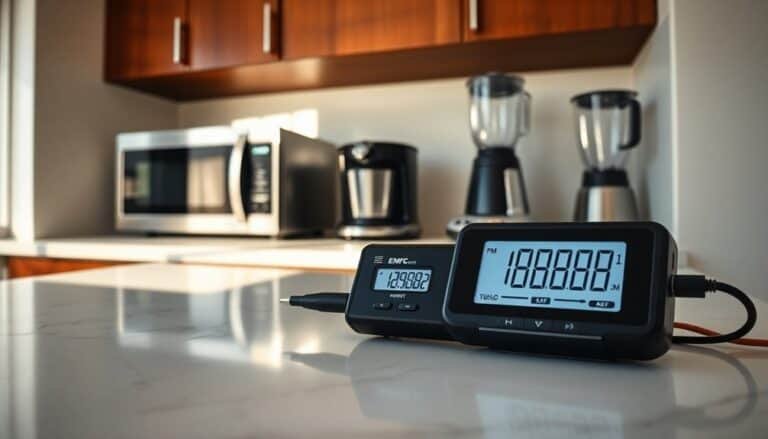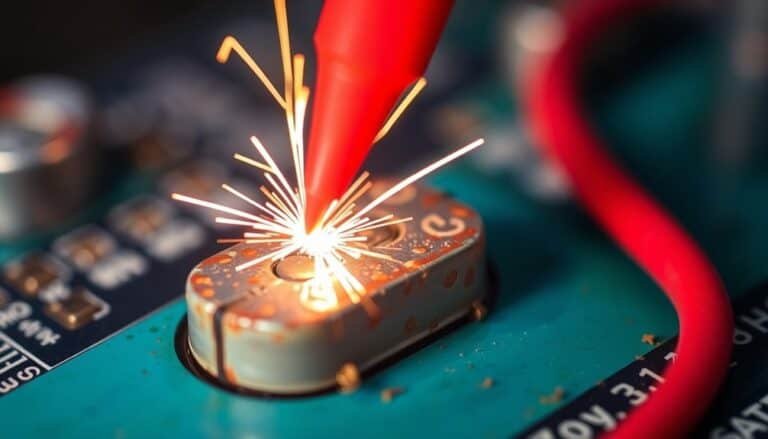Choosing the Right EMF Meter for Your Needs

To select the right EMF meter, evaluate your needs by considering meter types like single-axis, triaxial, and specialized models, focusing on features such as measurement range, accuracy, and data logging. Assess common uses, whether for industrial monitoring or health assessments, with options like the user-friendly Trifield TF2 or the professional-grade Gigahertz Solutions ME3951A.
Ensure you understand technical specs for reliable readings and continue researching to enhance your meter selection process.
Disclaimer: As an affiliate, I may collect a share of sales from the links on this page.
Understanding EMF Meter Types

When you’re choosing an EMF meter, it’s essential to understand the different types available on the market.
Single-axis meters measure EMF along one direction at a time, requiring you to rotate them manually to find the strongest field. They’re cheaper but take longer to complete a survey, making them suitable for basic assessments.
DC field meters utilize gaussmeters to measure natural geomagnetic fields and emissions from direct current sources. Understanding the specific applications of each type can greatly enhance your decision-making process.
Magnetic field meters assess exposure from electrical wiring by measuring in Gauss (G) or Tesla (T).
Each type serves specific applications, so identify your needs before making a selection.
Key Features to Look For
Choosing the right EMF meter involves understanding its key features, which directly impact its performance and usability.
Focus on measurement range; meters vary from milligauss (mG) and microteslas (µT) to volts per meter (V/m). For instance, the REED EMF meter has a measurement range of -199.9 to 199.9 mG and -19.9 to 19.9 µT.
Check frequency response, usually from 40 Hz to 10 kHz.
Consider sensor types; triaxial sensors provide complete measurements without orientation.
Look for accuracy specifications, such as ±(2% + 2mG), and common resolutions of 0.1 mG.
Confirm you have a clear LCD display and verify battery life and power options.
Finally, examine data management capabilities, such as data hold, maximum readings, and connectivity options.
Common Applications of EMF Meters
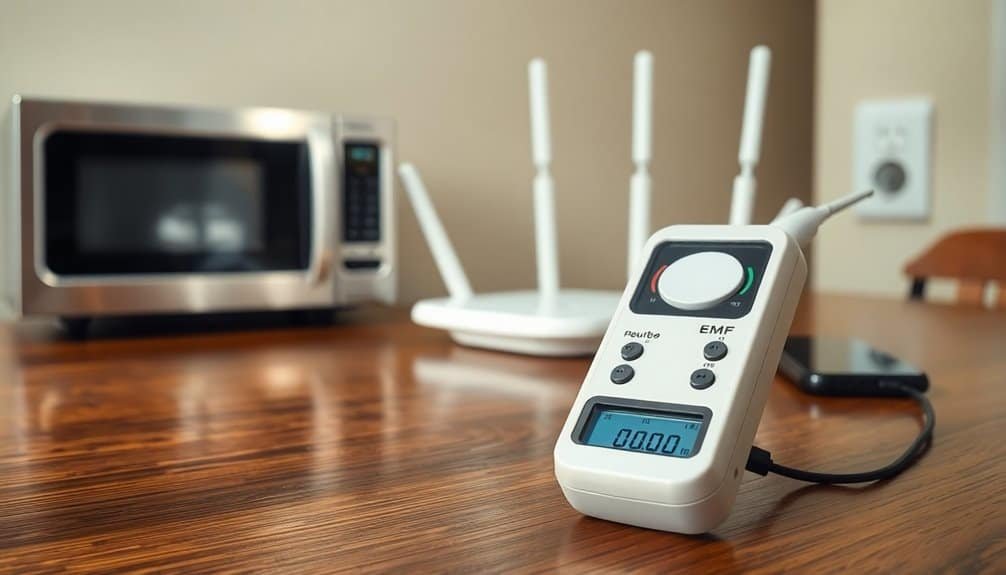
Understanding the diverse applications of EMF meters can enhance their value in various contexts.
In industrial settings, you use EMF meters to monitor workplace electromagnetic exposure, ensuring safety compliance. Additionally, your EMF meter can help detect natural and man-made sources of radiation that may pose risks in the environment, including electrosmog from electronic devices.
For health assessments, these devices evaluate radiation levels in schools and hospitals, promoting public safety.
In medical applications, you might detect abnormal body radiation or test medical devices for emissions.
For paranormal investigations, EMF meters identify unusual electromagnetic changes, hinting at ghostly presence.
Additionally, during home inspections, they help locate high electromagnetic fields from faulty wiring or appliances, ensuring your living environment is safe from harmful radiation exposure.
Popular EMF Meters in the Market
Electromagnetic field (EMF) meters come in various types, each engineered for specific measurement purposes.
Popular choices include the Trifield TF2, known for affordability and user-friendly functionality, and Gigahertz Solutions ME3951A, recognized for advanced features suitable for professionals.
For radio frequency, consider the Safe and Sound Pro II, which excels in RF detection.
If you need precise magnetic readings, the Gigahertz ME3851A measures to 0.001 mG.
Budget-friendly options like the HT627 EMF Meter provide good performance without high costs.
These devices cater to diverse applications, ensuring you find the right meter for your specific needs.
Factors to Consider Before Purchasing
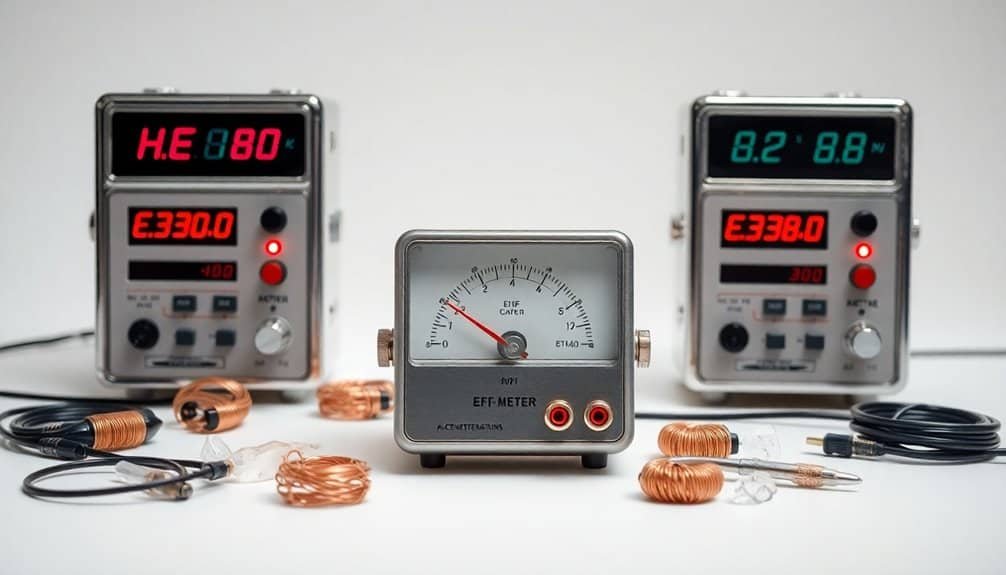
When considering a purchase of an EMF meter, it’s essential to evaluate several key factors to guarantee you select a device that meets your requirements.
Focus on these aspects:
- Measurement Types: Know whether you need to detect ionizing or non-ionizing radiation, and specific frequency ranges.
- Accuracy and Sensitivity: Look for high accuracy, sensitivity for low-level readings, and reliable calibration options.
- Data Interpretation: Choose a meter with clear displays, alert features, and data logging capabilities for effective usage. Additionally, consider the measurement ranges offered by different models to ensure you capture the necessary frequencies for your specific needs.
Technical Specifications Explained
Technical specifications play a pivotal role in selecting an EMF meter that matches your needs.
Measurement Axes: Choose between single-axis, which measures one direction, and tri-axis, which captures data along three axes simultaneously.
Measurement Units: Common units include microtesla (µT) and milligauss (mG). Range varies from 0.01 µT to 2000 µT.
Accuracy: Varies by range, with lower ranges being more accurate.
Frequency Range: Most meters measure 50 Hz or 60 Hz, but specialty models suit specific needs.
Additional Features: Consider response time, size, display type, data logging capability, and power source for usability. Understanding the different types of EMF meters can help you select the most suitable one for your measurement requirements.
Maintenance and Care for EMF Meters
Maintaining and caring for your EMF meter is essential for ensuring accurate readings and longevity. Here are three key maintenance tasks to focus on:
- Regular Cleaning: Clean electrodes and the flow tube with non-abrasive agents to remove dirt and scale, following manufacturer guidelines.
- Electrical Connections: Inspect and secure connections regularly to prevent signal issues, checking for corrosion and damaged wiring.
- Power Supply Management: Replace batteries as needed, ensuring a stable power supply to maintain consistent operation.
Frequently Asked Questions
Can EMF Meters Help Diagnose Health Issues Related to Exposure?
EMF meters can’t diagnose health issues; they measure electromagnetic field exposure levels instead. Misinterpreting their readings might lead you to unnecessary concerns, so always consult a medical professional for any health-related questions regarding EMF exposure.
How Do I Interpret EMF Readings for Safety Standards?
To interpret EMF readings for safety standards, you assess measurements against established limits like those from ICNIRP. Check specific units for electric, magnetic, or RF fields, ensuring your readings comply with these safety guidelines.
Are There Specific EMF Meters for Different Environments?
Did you know that 60% of homes have measurable EMF levels? Depending on your environment—home, professional, or industrial—there’re specific EMF meters designed to provide accurate readings suited for your unique needs and exposure levels.
How Often Should I Test for EMF Levels at Home?
You should regularly test for EMF levels at home, especially after new devices are installed or major changes occur. Monthly checks are helpful, and annual assessments guarantee ongoing safety and awareness of potential exposure.
Can EMF Meters Detect Non-Ionizing Radiation?
Yes, EMF meters can detect non-ionizing radiation. They measure electromagnetic fields from devices like phones and Wi-Fi routers, ensuring you’re aware of your exposure levels and helping you stay within safety guidelines.
Conclusion
Choosing the right EMF meter depends on your specific needs, including the type of EMF, measurement range, and sensitivity levels. Evaluate features like data logging and frequency response to ensure it suits your application, from home safety to occupational health. A wrong choice can lead to misleading readings, so carefully weigh your options before purchasing. The right meter can provide peace of mind.

